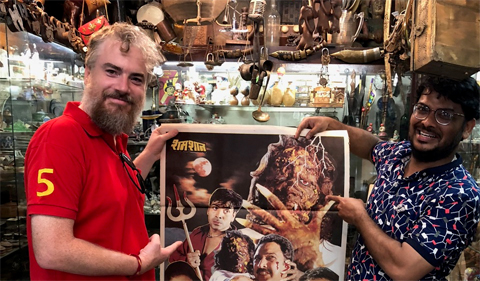Associate Professor Brian Collins, the Drs. Ram and Sushila Gawande Chair in Indian Religion and Philosophy and the chair of Classics & World Religions, recently published his second monograph, The Other Rāma: Matricide and Genocide in the Mythology of Paraśurāma, in the SUNY Series in Hindu Studies.
Based on his 2010 University of Chicago dissertation “Headless Mothers, Magic Cows, and Lakes of Blood: The Paraśurāma Cycle in the Mahābhārata and Beyond,” The Other Rāma is a study of the mythical warrior-sage Paraśurāma (“Rāma with the Axe”). Paraśurāma is the sixth incarnation of the Hindu high god Viṣṇu and a minor figure in the Mahābhārata (c. 500 BCE-500 CE) and Rāmāyaṇa (c. 400 BCE-400 CE) epics, but he is best known for decapitating his mother and exterminating the entire warrior class for 21 generations to avenge his father’s murder.
Described by the University of Washington’s Professor Christian Lee Novetzke as a “lively and delightfully written study of the Paraśurāma myth… filtered through one of the History of Religions’ key analytical tools, psychoanalytical theory,” The Other Rāma draws conclusions about where the myth comes from, who authored it and why, and what it tells us about ancient conceptions of class and community on the one hand and modern conceptions of genocide and total war on the other.
The Other Rāma is the first comprehensive and systematic analysis of this well-known but rarely studied figure, and it uses new and creative readings of his mythology to present a solution to the enigma of a human hero whose elevation to divinity, despite being almost solely known for his two unpardonable sins of excessive violence, has long puzzled scholars and readers.




















Comments